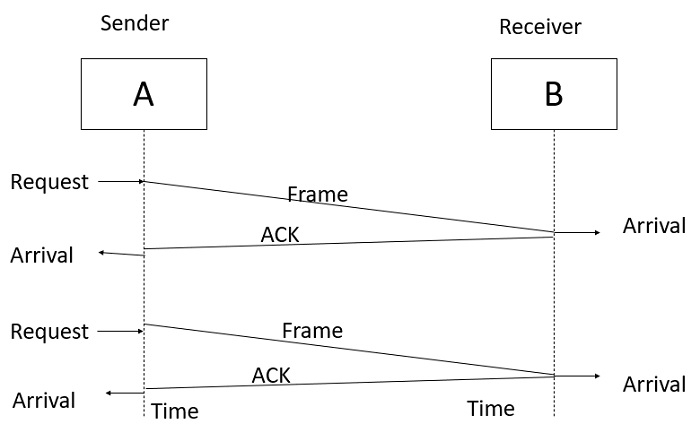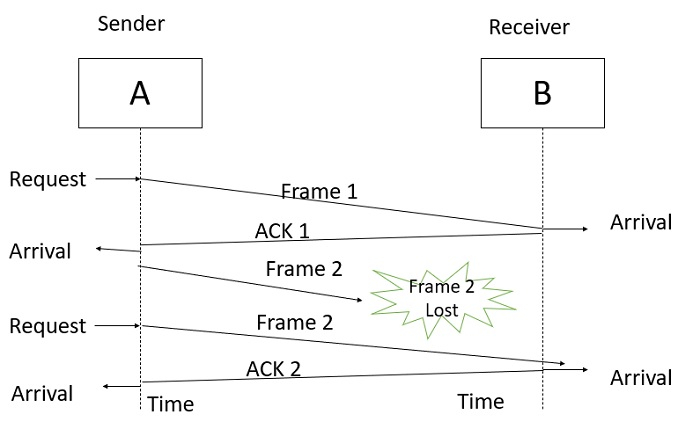
 Data Structure
Data Structure Networking
Networking RDBMS
RDBMS Operating System
Operating System Java
Java MS Excel
MS Excel iOS
iOS HTML
HTML CSS
CSS Android
Android Python
Python C Programming
C Programming C++
C++ C#
C# MongoDB
MongoDB MySQL
MySQL Javascript
Javascript PHP
PHP
- Selected Reading
- UPSC IAS Exams Notes
- Developer's Best Practices
- Questions and Answers
- Effective Resume Writing
- HR Interview Questions
- Computer Glossary
- Who is Who
What are elementary data link layer protocols?
Elementary Data Link protocols are classified into three categories, as given below −
Protocol 1 − Unrestricted simplex protocol
Protocol 2 − Simplex stop and wait protocol
Protocol 3 − Simplex protocol for noisy channels.
Let us discuss each protocol one by one.
Unrestricted Simplex Protocol
Data transmitting is carried out in one direction only. The transmission (Tx) and receiving (Rx) are always ready and the processing time can be ignored. In this protocol, infinite buffer space is available, and no errors are occurring that is no damage frames and no lost frames.
The Unrestricted Simplex Protocol is diagrammatically represented as follows −

Simplex Stop and Wait protocol
In this protocol we assume that data is transmitted in one direction only. No error occurs; the receiver can only process the received information at finite rate. These assumptions imply that the transmitter cannot send frames at rate faster than the receiver can process them.
The main problem here is how to prevent the sender from flooding the receiver. The general solution for this problem is to have the receiver send some sort of feedback to sender, the process is as follows −
Step1 − The receiver send the acknowledgement frame back to the sender telling the sender that the last received frame has been processed and passed to the host.
Step 2 − Permission to send the next frame is granted.
Step 3 − The sender after sending the sent frame has to wait for an acknowledge frame from the receiver before sending another frame.
This protocol is called Simplex Stop and wait protocol, the sender sends one frame and waits for feedback from the receiver. When the ACK arrives, the sender sends the next frame.
The Simplex Stop and Wait Protocol is diagrammatically represented as follows −

Simplex Protocol for Noisy Channel
Data transfer is only in one direction, consider separate sender and receiver, finite processing capacity and speed at the receiver, since it is a noisy channel, errors in data frames or acknowledgement frames are expected. Every frame has a unique sequence number.
After a frame has been transmitted, the timer is started for a finite time. Before the timer expires, if the acknowledgement is not received , the frame gets retransmitted, when the acknowledgement gets corrupted or sent data frames gets damaged, how long the sender should wait to transmit the next frame is infinite.
The Simplex Protocol for Noisy Channel is diagrammatically represented as follows −


